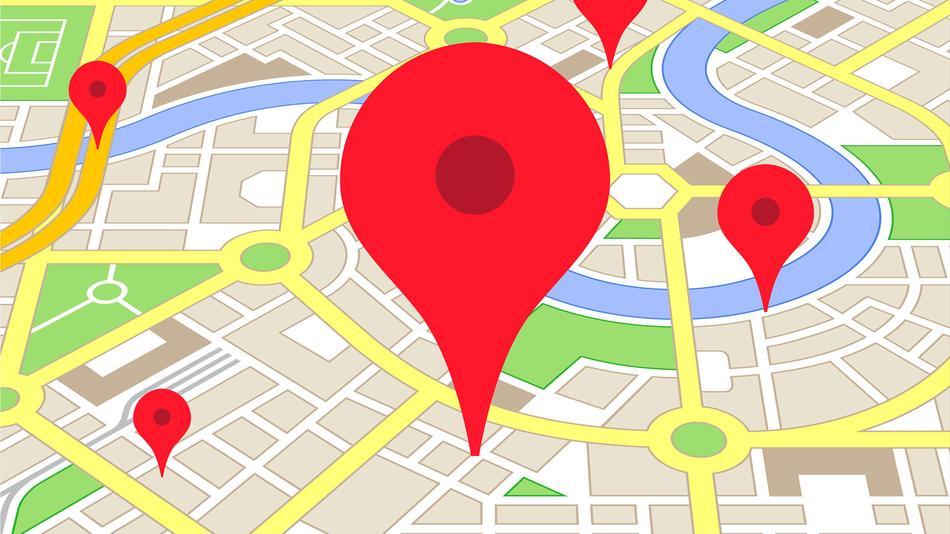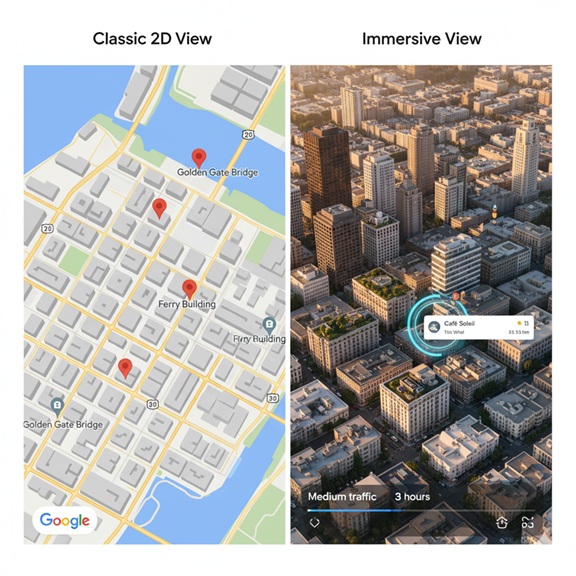20 Years of Google Maps and the Quest to Map Every Corner of Our Lives

Twenty years ago, we unfolded paper maps, traced routes with highlighters, and accepted getting lost as a part of the journey. Then, a blue dot appeared, and everything changed.
Google Maps began with a simple, audacious goal: to put a digital map of the world in everyone’s pocket. Two decades later, it has achieved something far more profound. It has created a living, breathing atlas—an intelligent, predictive, and deeply personal reflection of our world.
As Google celebrates 20 years of innovation, it’s clear Maps is no longer just about avoiding a wrong turn. It’s about discovering the right one, both on the road and in life. This is the story of how our digital compass learned to dream.
1. From Flat Page to Immersive Reality: Seeing is Believing
The journey from a 2D map to a true-to-life digital twin of our world is perhaps the most stunning part of the Google Maps story. It began with the humble Street View, a revolutionary concept that let us virtually stand on any street corner. We could “time travel” with it, watching neighborhoods evolve over the years.
Today, that foundation has given rise to Immersive View. This isn’t just a 3D model; it’s a dynamic simulation. By fusing trillions of images with AI, Maps now lets you soar over a city, check the afternoon lighting on a cafe patio, see the predicted traffic for your evening commute, and even step inside a restaurant—all before you’ve decided to go. It’s a feature that moves beyond showing you what a place is and starts showing you what it will be like when you get there.

2. From Directions to Decisions: The Rise of the Discovery Engine
Getting from A to B is a solved problem. The real challenge is deciding where “B” should be. This is where the new generation of AI-powered features shines, transforming Maps into a true discovery engine.
Instead of just searching for “sushi near me,” you can now ask Maps for inspiration with Gemini. Queries like, “show me a place in San Francisco with a vintage vibe and live music,” will yield curated, intelligent suggestions. Once you have a few options, Maps uses AI to summarize millions of reviews, highlighting menu standouts (“everyone raves about the spicy tuna roll”) and the general atmosphere.
For group outings, the endless back-and-forth of “where should we go?” is solved with collaborative lists, allowing friends to add places and vote on a final destination. This suite of tools marks a fundamental shift: Google Maps is no longer just answering your questions; it’s helping you ask better ones.
3. From a Tool to a Companion: Mapping a More Thoughtful World
The most profound evolution of Google Maps lies in its growing ability to understand and assist with the nuances of our daily lives. It has become a thoughtful companion that anticipates our needs and reflects our values.
For EV drivers, it alleviates range anxiety by not only finding charging stations but also integrating them seamlessly into long-distance routes, showing compatibility and real-time availability. For the environmentally conscious, eco-friendly routing saves fuel and money by finding the most efficient path. For those with mobility needs, accessibility information highlights wheelchair-accessible entrances, parking, and restrooms, making the world easier to navigate for everyone.
And even when you’re completely off the grid, offline maps ensure you’re never truly lost. These features show a deep understanding that the best route isn’t always the fastest—it’s the one that’s most efficient, most accessible, and most aligned with our needs.
The Next 20 Years: An Atlas of Possibilities
From the playful nostalgia of Pegman in costume to the futuristic utility of pointing your phone at a building and having Lens in Maps tell you its entire history, Google Maps has woven itself into the fabric of our curiosity and our daily routines.
The first 20 years were about mapping the physical world. The next 20 will undoubtedly be about mapping the infinite possibilities within it. The journey is far from over, but one thing is clear: we’ll never have to refold a map again.